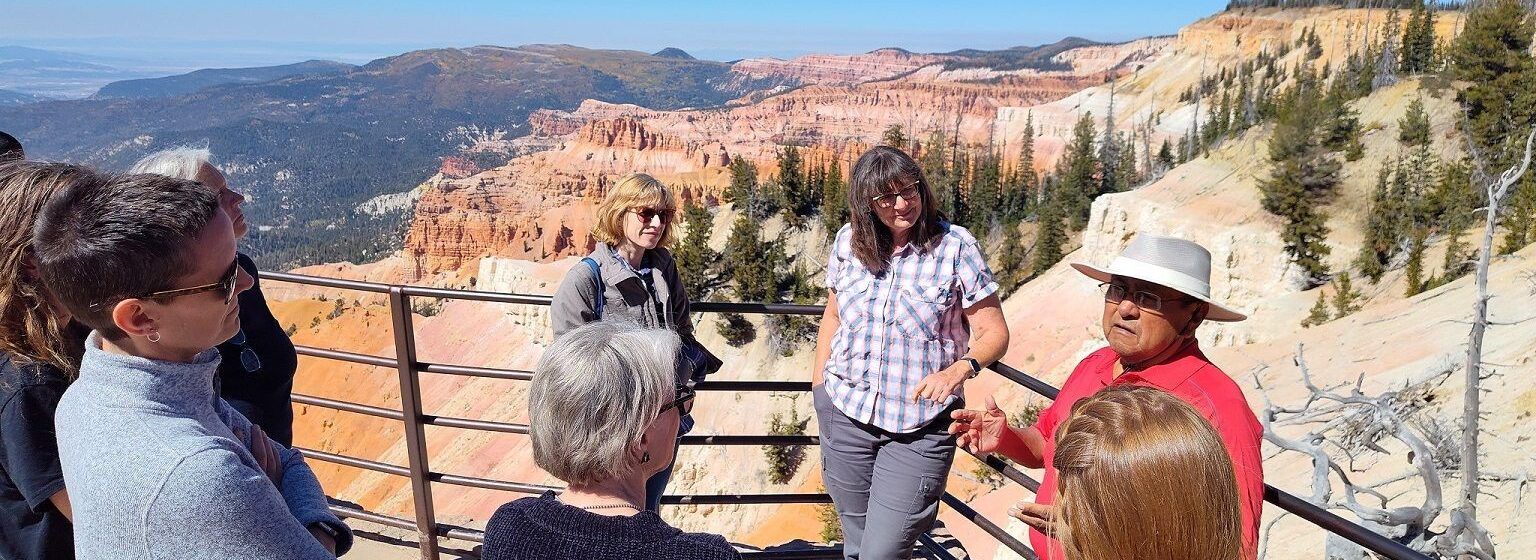End of the 35th Anniversary Year Giving
SHOW YOUR SUPPORT FOR FELLOW TEACHERS AND STUDENTS
Your gift of $35 puts an Investigating Shelter curriculum guide into the hands of one teacher, unlocking hands-on archaeology lessons for dozens of students and supporting workshops that bring history to life.
Celebrate Project Archaeology’s 35th anniversary with us by making a one-time or monthly gift of $35. Together, we inspire curiosity, confidence, and engagement as students investigate the past.
Dear Project Archaeology friends and colleagues,
Have you ever heard a young person say, “History is boring!”? As a history teacher and mother of four, I’ve heard this a lot. My own 4th grader’s favorite subjects are math and science, not history. Too often, students disengage from history because they don’t see it as relevant to their lives.
That’s where Project Archaeology changes the dynamic—sparking curiosity and connecting students to the past in meaningful ways. In Investigating Shelter, students realize that their own homes contain objects that tell stories about who they are. When they compare shelters from the past with their own, they discover both similarities and differences, and suddenly, history feels alive.
Students begin telling stories about their own homes, asking questions about how people lived long ago, and realizing that the objects left behind reveal how people have lived on this land. And soon, every single hand is raised!
This year marks Project Archaeology’s 35th anniversary. Please join me in celebrating this milestone by supporting the continued success of archaeology education—education that makes history relevant, engaging, and transformative for young people.
A gift of $35, either one-time or monthly, to our nonprofit partner, the Institute for Heritage Education, ensures that students continue to experience the excitement of discovering the past through the thrill of archaeological inquiry.
I’ve seen this thrill firsthand. When students work with a large floor map of an archaeological site and corresponding artifact cards, their eyes light up with curiosity. They use math and science to uncover how people lived in the past, gaining confidence as they make observations and inferences.
Teachers across the country see similar transformations. One Montana teacher shared that a Native American student in her class, who had never participated, raised his hand for the first time while she was teaching Project Archaeology’s Investigating a Plains Tipi. The student saw how his classmates were excited by Joe Medicine Crow’s oral histories and were curious to learn about Native American cultures. That student raised his hand for the first time because he realized his voice mattered.
As an Oregon teacher put it: “Students need hands-on activities that help bring connections. By having activities where they talk about their own homes, [we] can help them look at the homes of others and learn about them and the people of the past.”
With gratitude,
Courtney L. Agenten, Network Director
P.S. Your support also strengthens our donor base, which is critical when applying for grants. Please help us by forwarding this email to others who care about







 WHAT IS THE ARCHAEOLOGICAL CONSERVANCY?
WHAT IS THE ARCHAEOLOGICAL CONSERVANCY? 
 Despite the disappointment of losing the funding, Project Archaeology explored options to offer the Institute. We surveyed the 200 teachers who applied for the Institute and received 113 responses. These responses indicated a strong interest in joining the Institute, even with a significantly increased financial burden for the teachers.
Despite the disappointment of losing the funding, Project Archaeology explored options to offer the Institute. We surveyed the 200 teachers who applied for the Institute and received 113 responses. These responses indicated a strong interest in joining the Institute, even with a significantly increased financial burden for the teachers.


![A photo of an ‘olas kii pithouse, taken by William Dinwiddle. Courtesy of National Anthropological Archives, Smithsonian Institution. [GNO2779].](https://i0.wp.com/projectarchaeology.org/wp-content/uploads/2025/04/2.-Photo-taken-by-William-Dinwiddie-1-scaled.jpg?resize=331%2C215&ssl=1)


















 From Lesson Four in Investigating
From Lesson Four in Investigating 

